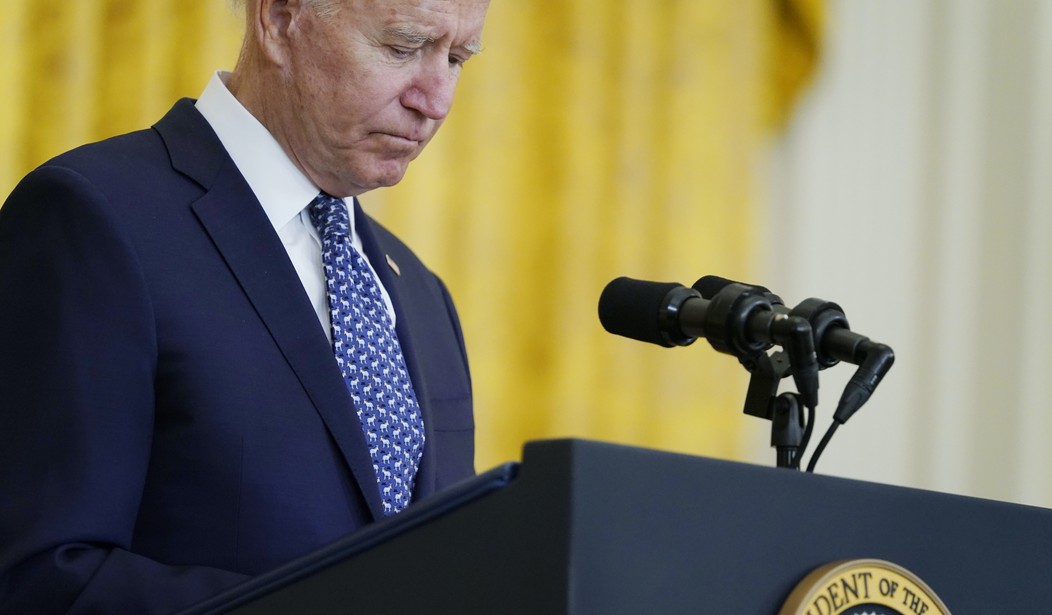What happens in an economy where the supply chains malfunction, the government issues edicts that restrict the economy, and the sugar highs of previous stimulus run out? Frankly, with all of those conditions in play, we should be marveling that the US economy didn’t drop into negative territory this summer.
The annualized 2.0% GDP growth still makes Q3 the worst quarter since the initial government shutdowns over COVID-19, though:
Real gross domestic product (GDP) increased at an annual rate of 2.0 percent in the third quarter of 2021 (table 1), according to the “advance” estimate released by the Bureau of Economic Analysis. In the second quarter, real GDP increased 6.7 percent.
Three months ago, the Biden administration took full credit for that Q2 result. We can expect a lot less ownership over the Q3 results, although in fairness one factor was mainly out of their control. The Delta wave began in Q2 but most of its effects got felt in July and August. The supply-chain crisis, on the other hand, never got White House attention until this month.
The Wall Street Journal notes that the results failed to meet even the low expectations of analysts:
The U.S. economy grew by 2.0% last quarter, with the Delta variant and supply issues dampening gains. Growth could accelerate during the holidays, analysts say.
Economists surveyed by The Wall Street Journal estimated that gross domestic product grew at an annual rate of 2.8% in July through September. Such a pace would exceed the 2.3% growth rate clocked in the year preceding the pandemic, but mark a sharp slowdown from robust gains earlier this year. …
Supply-chain disruptions such as backups at U.S. ports and overseas manufacturing disruptions contributed to a sharp increase in inflation and pose a risk to the economic outlook. Despite supply-side challenges, many analysts expect the economy to regain momentum in the final months of the year as long as Covid-19 cases continue to fall.
“We had a temporary set of impediments coming from a resurgence of the coronavirus that should ease as we move through the quarters ahead,” said Carl Tannenbaum, chief economist at Northern Trust.
Don’t be so sure. Consumers bailed out in Q3, with personal consumption expenditure (PCE) increases dropping from double digits in the previous two quarters to an anemic 1.6% annualized growth rate in Q3. (All figures are annualized in this analysis.) Absent the first two quarters of pandemic impact (2020Q1 & Q2), that’s the worst monthly reading in at least three years. PCEs in durable goods dropped an astounding 26.2%, thanks in no small part to the supply-chain crisis that Joe Biden and his administration ignored until this month.
The trade imbalance got worse, too. Even with the supply chain issues, imports rose 6.1% in Q3, the fifth straight quarter for increases, although that is the lowest seen since the shutdowns. Exports, however, fell 2.5% overall, and exported goods fell 5.1%.
Business investment picked up in Q3, reversing two quarters of decline, but even that’s a false glimmer of hope. Both fixed investments and structures declined, and equipment investment dropped by 3.2%. The entirety of the jump in this category came from a 12.2% increase in intellectual property investment. That doesn’t portend any significant expansion in business operations in the near term.
Plus, the topline number is actually a little too positive. Final sales of domestic product dropped by 0.1%, which means the growth in Q3 went into inventory replenishment rather than actual economic activity. That may not be a recessionary number, but it’s clearly a stall, one which will tend to depress the overall GDP in Q4 as manufacturing reacts to that inventory expansion.
Expect plenty of blamethrowing for this weak result in an attempt to absolve Biden from the blame for this stall-out. We can see it already in the attempts to attribute it to the Delta variant and the supply-chain crisis, but both of those implicate the administration. The economic impact from Delta largely comes from the government’s response to it in imposing mandates and encouraging more restrictions on in-person commerce, at least some of which were unnecessary. The supply-chain crisis has brewed ever since we re-opened the economy last year, but Biden and Pete Buttigieg dropped the ball.
And finally, one has to point to rapidly escalating fuel prices as a particular problem for economic growth in Q3. What caused that problem, if not Biden’s insistence on cutting off exploration and extraction for oil and natural gas, sending futures prices skyrocketing and removing our independence from foreign fuel sources? When the sugar highs from stimulus run out, suddenly all these problems become too apparent to ignore. Or escape.








Join the conversation as a VIP Member